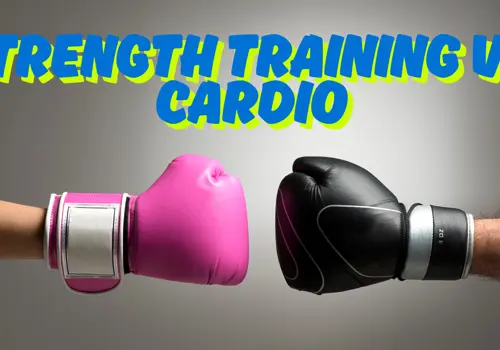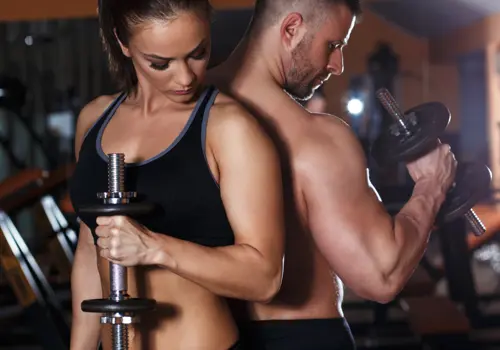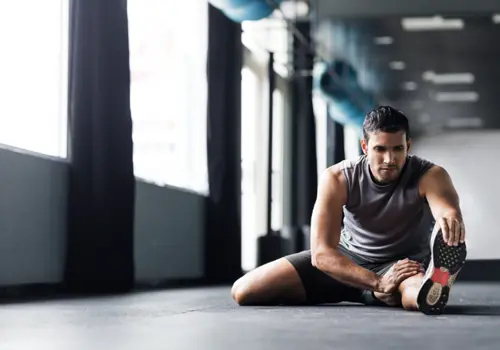Exercises/Workouts • Feb 13, 2025
The Svet Guide To Bodybuilding Workouts At Home
Gone are the days when building muscle meant spending countless hours in a packed gym, waiting for your turn on the bench press. And we couldn’t be more pleased!
With the right strategy, equipment, and mindset, you can achieve serious bodybuilding results from the comfort of your home. It’s possible even if you’re a beginner looking to get started. Of course, at-home bodybuilding workouts are also great for experienced lifters transitioning away from the gym.
Why Are Bodybuilding Workouts At Home a Good Idea?
No more wasting time on commutes, no need for expensive gym memberships—just you, your dedication, and a carefully planned workout regimen. Building muscle at home offers flexibility, affordability, and the ability to tailor your training environment to your personal preferences.
At Svetness, we believe fitness should fit your lifestyle, not the other way around. That’s why our personal trainers have put together this ultimate home bodybuilding guide—to help you maximize your muscle-building potential without ever stepping foot in a gym. If you’re working with basic dumbbells and resistance bands, or just your bodyweight, this guide will provide structured workout routines, expert nutrition tips, and key strategies.
We’re going to help you build strength, sculpt muscle, and stay motivated at home. Ready to unleash your full potential? Let’s dive in.
Getting Started: Setting Up Your Home Gym
Building muscle at home starts with creating the right workout environment. While you don’t need a state-of-the-art setup, having a well-organized space with essential equipment can make a huge difference in your consistency and results. Let’s talk about choosing the right equipment, optimizing your workout space, and ensuring a safe and effective training environment.
What’s the Essential Equipment for Home Bodybuilding?
You don’t need a full gym to build an impressive physique. With a few key pieces of equipment, you can target every muscle group and create progressive overload, which is essential for muscle growth.
Dumbbells
Dumbbells are one of the most versatile tools for home workouts. A set of adjustable dumbbells allows you to increase resistance over time, helping to build strength and size efficiently.
Top tip: if space or budget is a concern, resistance bands can be a great alternative.
Resistance Bands
These lightweight, portable bands are fantastic for adding tension to exercises like squats, rows, and chest presses. They’re also easy on the joints and perfect for rehabilitation, warm-ups, and increasing time under tension.
Adjustable Bench
An adjustable bench expands your exercise options significantly. Incline and decline presses, Bulgarian split squats, step-ups, and core exercises all benefit from a sturdy workout bench.
If space is limited, consider a foldable bench that can be stored away after use.
Pull-Up Bar
A classic! A doorway-mounted pull-up bar is an excellent tool for developing back, biceps, and core strength. If pull-ups are too challenging at first, resistance bands can provide assistance.
Barbell and Weight Plates (Optional)
If you’re serious about progressive overload in your workout, investing in a barbell and weight plates can take your home workouts to the next level. Compound movements like squats, deadlifts, and overhead presses will help you build full-body strength more effectively.
Create a Dedicated Workout Space
Make your space work for you. It doesn’t matter if you don’t have an entire room for a home gym (spoiler: most people don’t!). Designating a specific space for workouts can improve focus and motivation.
We recommend choosing an open area. For example, a garage, basement, or spare room works best, but even a corner of your living room can be sufficient. Motivation is your key aim here, so think about ways you can check your progress and stay on track with your goals. Perhaps a whiteboard for tracking weekly progress, or a mirror in the right place for checking your form as you workout.
Make sure to keep things safe, tidy and clean too. Keep any weights or other equipment you have away from walkways. It’s important to make sure weights are organized too, so they don’t wall or cause a tripping hazard. Clear away any clutter, and invest in a rubber mat or foam flooring to protect joints and floors.
Our Trainers’ Example Home Bodybuilding Workouts
Beginner Full-Body Workout
Squats (Bodyweight or with Dumbbells)
Squats are a fundamental movement in lots of workouts, targeting the quadriceps, hamstrings, glutes, and core. Squats help improve lower body strength, mobility, and stability, making them essential for any home bodybuilding routine.
How to do it: Stand with your feet shoulder-width apart. Keep your chest up and engage your core. Lower your body by bending at the knees and hips as if sitting into a chair. Go down until your thighs are parallel to the floor, then push through your heels to return to standing.
Svexpert tip: Avoid letting your knees cave inward—focus on driving them outward to maintain proper form.
Push-Ups
Push-ups are a classic bodyweight exercise that primarily work the chest, shoulders, and triceps, while also engaging the core for stability.
How to do it: Get into a high plank position with your hands slightly wider than shoulder-width apart. Keep your body in a straight line from head to heels. Lower yourself until your chest is just above the floor, then push back up explosively.
Svexpert tip: To make it easier, modify your push-ups by dropping to your knees. To increase difficulty, elevate your feet or add a weighted backpack.
Bent-Over Dumbbell Rows
This exercise strengthens the upper back, rear delts, and biceps, improving posture and overall pulling strength.
How to do it: Hold a dumbbell in each hand with a neutral grip. Hinge your body at your hips, keeping your back flat and core engaged. Pull the dumbbells toward your torso, squeezing your shoulder blades together. Lower them smoothly back down, maintaining control.
Svexpert tip: Keep your elbows close to your body to engage more of the lats rather than relying on your arms.
Overhead Dumbbell Press
The overhead dumbbell press primarily targets the shoulders (deltoids) and engages the triceps and upper chest for support.
How to do it: Stand or sit with a dumbbell held in each hand at shoulder height, with your palms facing forward. Press the weights overhead until your arms are fully extended, then slowly lower them back to the original starting position.
Svexpert tip: Avoid arching your lower back—engage your core and squeeze your glutes to stay stable.
Plank
The plank is an isometric core exercise that strengthens the abdominals, lower back, and shoulders, improving overall stability.
How to do it: Get into a forearm plank position with your body in a straight line from head to heels. Engage your core, keep your glutes tight, and hold the position for the desired time.
Svexpert tip: Don't let your hips sag or raise too high—aim for a straight, neutral spine.
Intermediate Upper/Lower Split
Dumbbell Bench Press
Add this exercise to your workout to target the chest, triceps, and shoulders. The dumbbell bench press mimics a traditional barbell bench press, but with more range of motion.
How to do it: Lie on a bench or similar surface with a dumbbell in each hand. Press the weights above your chest, then lower them (making sure to keep movements controlled) until your elbows reach about 90 degrees. Press back up to full extension.
Svexpert tip: Control the descent to maximize muscle engagement and avoid bouncing the weights.
Pull-Ups or Assisted Pull-Ups
Pull-ups are a powerful bodyweight movement that effectively strengthen the back, biceps, and core. Always make sure your pull-up bar is safely, securely and properly installed!
How to do it: Grab a pull-up bar with an overhand grip, hands slightly wider than shoulder-width. Pull yourself up until your chin clears the bar, then slowly lower back down. If needed, use a resistance band for assistance.
Svexpert tip: Focus on pulling with your back rather than just your arms for better muscle activation.
Lateral Raises
Lateral raises isolate your side delts, helping you carve out wider shoulders and a more aesthetic upper body.
How to do it: Stand with a dumbbell in each hand at your sides. Keeping a slight bend in your elbows, lift the dumbbells outward until they reach shoulder height. Slowly lower them back down.
Svexpert tip: Avoid swinging—use controlled movements and lighter weights to maintain proper form.
Bicep Curls
Bicep curls are one of the most essential and comprehensive exercises for arm development, targeting the biceps brachii and improving arm strength.
How to do it: Hold a dumbbell in each hand with palms facing forward. Curl the weights toward your shoulders, squeezing your biceps at the top. Lower them slowly back to the starting position.
Svexpert tip: Keep your elbows stationary and avoid using momentum—focus on strict form for the best results.
Tricep Dips
Unsurprisingly, tricep dips effectively target the triceps. They’re important for helping to build strong and defined arms.
How to do it: Sit on the edge of a chair or bench with your hands gripping the edge. Extend your legs forward and lower your body by bending your elbows until they reach 90 degrees. Push yourself back up.
Svexpert tip: Keep your elbows close to your body to avoid unnecessary shoulder strain.
Lower Body (Part of Split Routine)
Lunges
Lunges develop strong quadriceps, glutes, and hamstrings, while also improving balance and coordination.
How to do it: Step forward with one leg, lowering your back knee toward the ground while keeping your front knee aligned with your toes. Push back up to standing.
Svexpert tip: To increase intensity and difficulty, hold dumbbells in each hand or perform walking lunges.
Romanian Deadlifts with Dumbbells
This movement emphasizes the hamstrings, glutes, and lower back, helping to improve posterior chain strength.
How to do it: Hold a dumbbell in each hand and hinge at the hips, lowering the weights down the front of your legs while keeping a slight bend in your knees. Return to standing by squeezing your glutes.
Svexpert tip: Keep your spine neutral and avoid rounding your back to prevent injury.
Calf Raises
Calf raises strengthen the gastrocnemius and soleus muscles, which improve lower leg development and endurance.
How to do it: Stand on the edge of a step or flat surface. Press through the balls of your feet to lift your heels as high as possible, then slowly lower back down.
Svexpert tip: Pause at the top for extra contraction, and perform high repetitions to maximize growth.
Leg Raises
Leg raises strengthen the lower abs and hip flexors, enhancing core control and stability.
How to do it: Lie on your back with your legs extended. Keep your lower back pressed into the floor as you raise your legs to about 90 degrees. Lower them back down without letting them touch the floor.
Svexpert tip: Engage your core throughout the movement and avoid using momentum—it’s all about form.
Advanced Push/Pull/Legs Split
Incline Dumbbell Press
This exercise emphasizes the upper chest and shoulders, creating a well-rounded chest shape for that quintessential bodybuilder physique.
How to do it: Adjust a bench to a 30-45 degree incline. Press dumbbells from chest level to overhead, then lower with control.
Svexpert tip: Keep the dumbbells slightly angled for a natural movement pattern.
Deadlifts
Deadlifts are a full-body movement that target the posterior chain (hamstrings, glutes, lower back) and grip strength.
How to do it: Stand with feet hip-width apart, gripping a barbell or dumbbells. Hinge at your hips and lower the weights to the ground while keeping a neutral spine. Stand back up by driving through your heels.
Svexpert tip: Engage your lats and core to avoid rounding your back.
By committing to a well-planned home bodybuilding routine, prioritizing proper form, and progressively challenging yourself, you can build serious muscle without ever stepping foot in a gym. Stay consistent, and you'll see noticeable gains in strength and overall physique.
Start with the exercises and movements that feel comfortable for your fitness as it is today.Scale up and increase intensity as you get stronger. And if you’re looking for expert guidance to maximize your results, Svetness offers personalized bodybuilding training programs to help you stay motivated and on track every step of the way. Your fitness journey starts at home—let's make it count!
Frequently Asked Questions
Can I train for bodybuilding without heavy gym equipment?
Yes, with proper technique and progressive overload, significant muscle growth can be achieved using minimal equipment and bodyweight exercises. Make sure to use proper form and focus on developing the key bodybuilding muscles for the best physique possible.
How often should I change my workout routine?
It's advisable to change your routine every 6-8 weeks to prevent plateaus and keep your muscles challenged. Add new exercises or switch up your routine to make sure your body keeps pushing itself to develop.
Do I need to follow a strict diet to see results for bodybuilding?
While strict diets aren't mandatory, maintaining a balanced diet rich in protein, complex carbs, and healthy fats will enhance your results and help you hone a classic bodybuilding body type and physique.
Is cardio necessary for bodybuilding at home?
Incorporating cardio can improve cardiovascular health and aid in fat loss, complementing your bodybuilding efforts.




